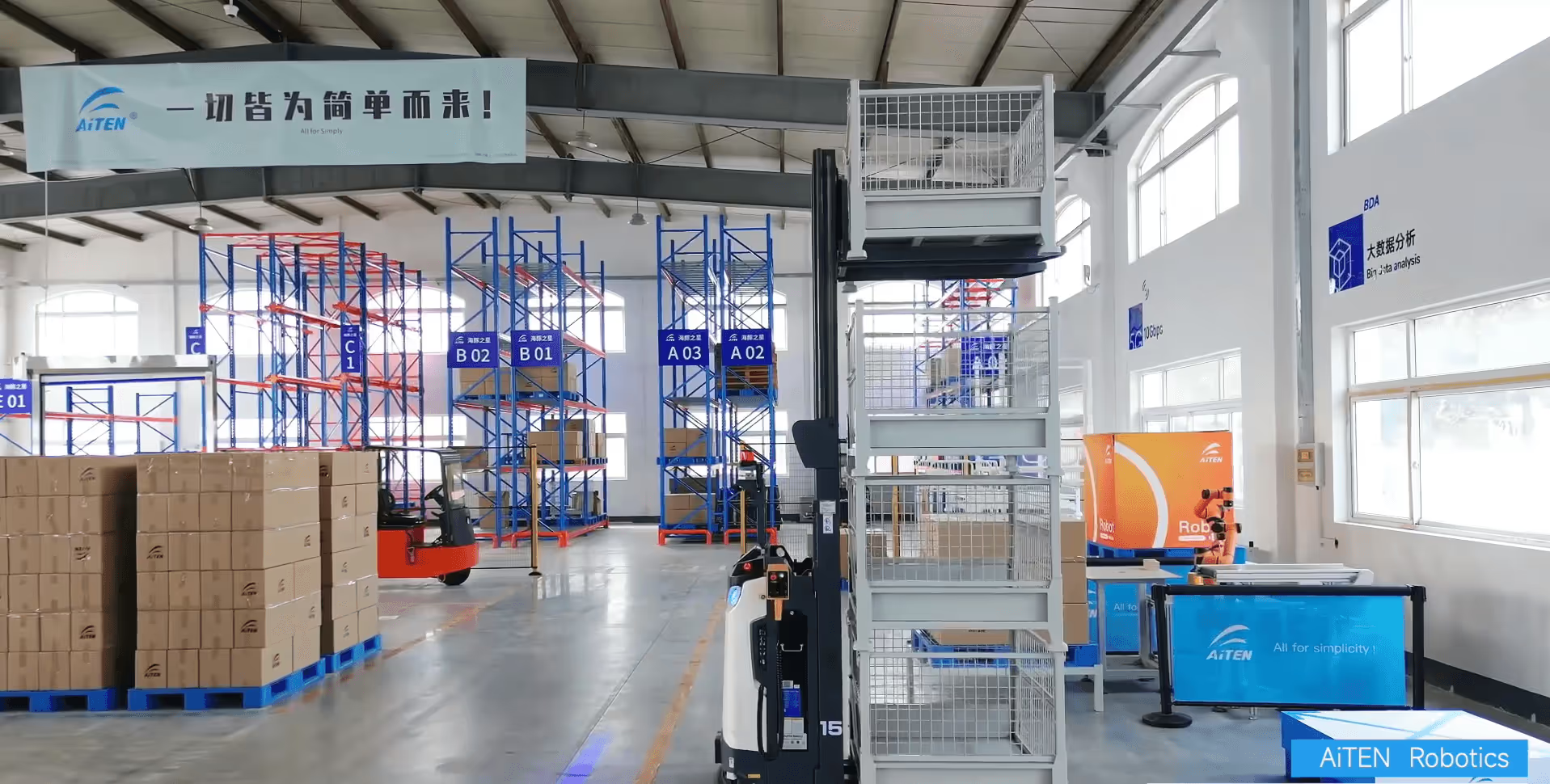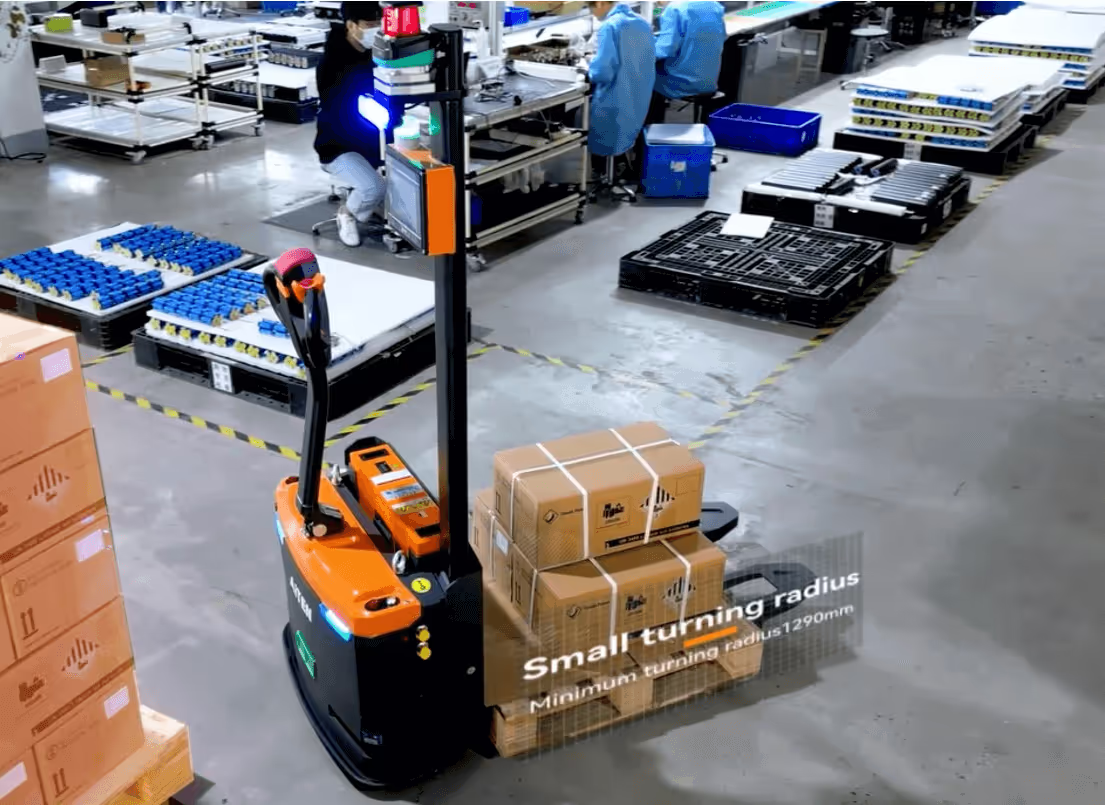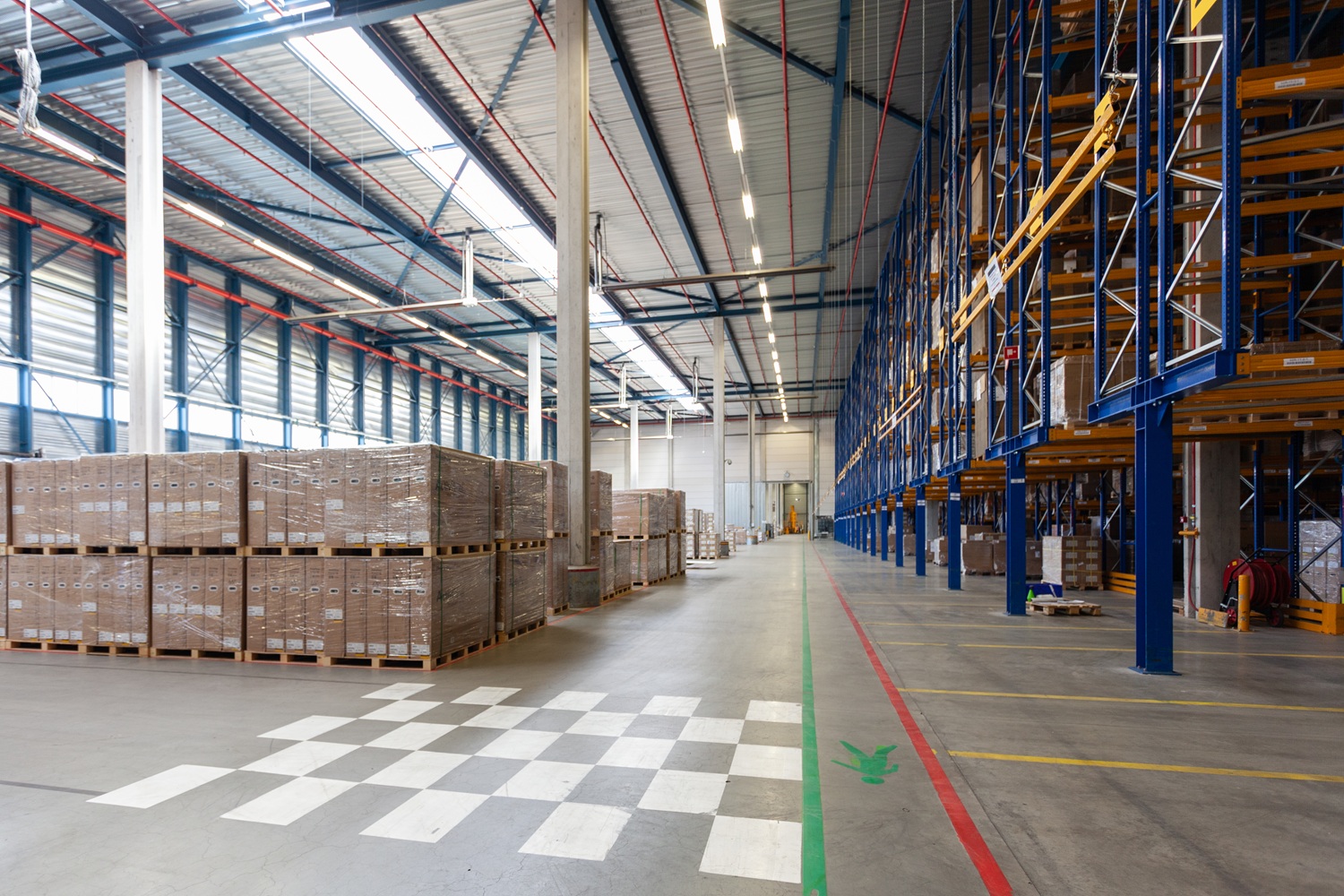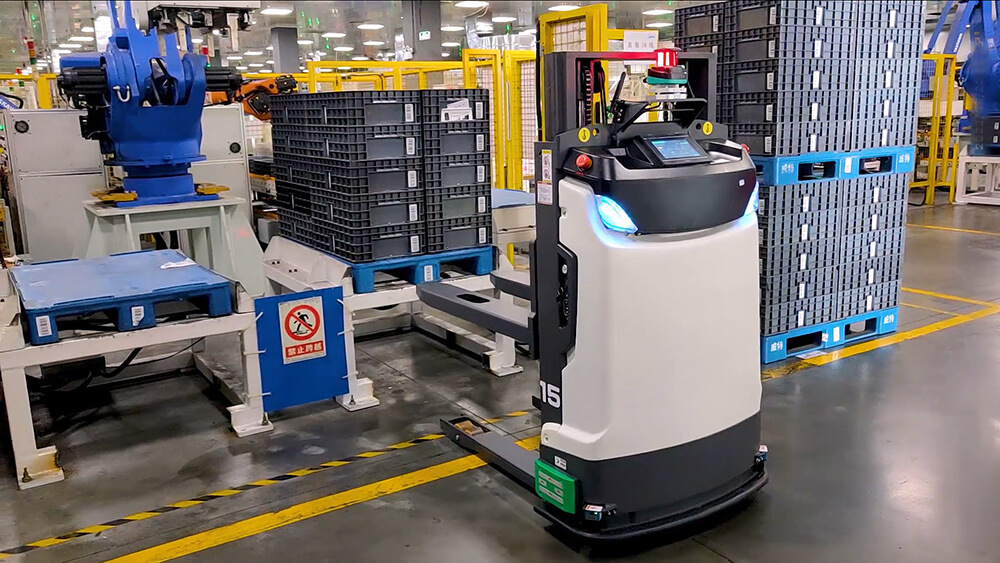지게차 운전자가 자동화될까요? 창고 운영의 미래

자동화가 물류를 재편함에 따라 시급한 질문이 생깁니다: 무인 지게차가 인간 작업자를 대체할 수 있을까요? 대답은 단순한 '예' 또는 '아니오'가 아니라 '변화'입니다. 무인 지게차는 일자리를 없애는 것이 아니라 일자리를 재정의하고 있습니다. 그 방법은 다음과 같습니다.
1. 무인 지게차의 부상
무인 지게차 또는 AGV(무인 운반차)는 틈새 도구에서 주류 솔루션으로 진화했습니다. 최신 AGV는 LiDAR, AI 내비게이션, 360° 충돌 방지 기능을 갖추고 있습니다:
- 좁은 통로(폭 1.2m)를 ±10mm 정밀도로 탐색하여 좁은 공간에서 인간 운전자보다 뛰어난 성능을 발휘합니다.

- 지게차 사고의 62%를 차지하는 주요 원인인 피로 없이 24시간 연중무휴로 작업하세요.
AGV 및 무인 지게차 시장 규모는 2025년 10억 3천만 달러였으며 2025년에는 11억 5천만 달러에 달할 것으로 예상되며 2033년에는 27억 달러로 더욱 확대될 것으로 전망됩니다. 이러한 성장은 물류창고의 자동화 증가, 전자상거래 보급률 증가, AI 기반 자재 취급 시스템의 광범위한 채택으로 전 세계 물류 및 제조 부문에서 도입이 증가하고 있는 추세를 반영합니다.
2. 자동화가 경제적인 이유
무인 지게차는 안전 외에도 업계의 중요한 문제점을 해결합니다:
- 노동력 부족: 미국에서는 지게차 운전자의 이직률이 45%를 넘지만 AGV는 채용이나 교육이 필요하지 않습니다.
- 비용 효율성: 무인 지게차는 초기 비용이 2만~10만 달러에 달하지만, 사고, 유지보수 및 에너지 사용량 감소로 인해 5년 동안 사람이 운전하는 지게차보다 총소유비용(TCO)이 35% 낮습니다.
- 확장성: AGV 차량은 원격으로 확장/축소할 수 있어 계절별 비즈니스에 이상적입니다.
사례 연구:
첸장냉동의 스마트 팩토리 혁신을 이끈 AMK 협통로 AGV
물류 관리가 혼란스러운 자동차 공장의 창고 활용도를 30% 향상시킨 AiTEN의 맞춤형 솔루션
3. 인간적 요소: 대체 불가능하지만 변화된
우려와 달리 자동화는 일자리를 없애는 것이 아니라 일자리를 재정의하는 것입니다.
- 역할 진화: 운전자는 차량을 모니터링하고 예외를 해결하며 워크플로를 최적화하는 'AGV 코디네이터'로 전환하고 있습니다.

- 기술 업그레이드: 새로운 직무에는 기술적 소양이 필요합니다(차량 관리 소프트웨어, 원격 진단).
- 안전 협업: 무인 지게차는 반복적인 작업에 탁월한 반면, 사람은 비정형적인 시나리오(손상 검사, 복잡한 팔레트 적재)를 처리합니다. 무인 지게차와 인간 품질 검사자를 함께 사용하면 물류창고의 정확도를 향상시킬 수 있습니다.
4. 완전 자동화를 방해하는 과제
- 레거시 인프라: 오래된 창고에는 AGV 친화적인 레이아웃(예: QR코드 마커, 충전 스테이션)이 부족하여 많은 비용이 드는 개조가 필요합니다.
- 규제 장애물: 독일과 같은 국가에서는 혼합 환경에서 AGV에 대한 사람의 감독을 의무화하여 도입을 늦추고 있습니다.
- 초기 투자: 중소기업은 무인 지게차 초기 비용으로 인해 어려움을 겪고 있지만, 리스 모델이 등장하고 있습니다.
5. 미래: 경쟁이 아닌 공존
업계 리더들은 하이브리드 모델을 구상하고 있습니다:
- 선택적 자동화: 무인 지게차는 일상적인 취급의 80%를 처리하고, 예외적인 작업은 사람이 관리하여 해고 없이 운전자의 업무량을 줄입니다.
- 코보틱 협업: 무인 지게차가 인간 포장 스테이션에 팔레트를 전달하는 자동화된 지게차처럼 인간과 로봇의 핸드오프가 등장할 것입니다.
- 윤리적 자동화: 로봇 기업은 '인간 증강'을 우선시하며, 무인 지게차를 설계할 때 인간의 능력을 대체하는 것이 아니라 향상시키는 것을 우선시합니다.
결론
무인 지게차는 일자리를 없애기 위한 것이 아니라 일자리를 발전시키기 위한 것입니다. 진정한 질문은 "지게차 운전자가 자동화될 것인가?" 가 아니라 "기업이 자동화된 미래에서 성공하기 위해 어떻게 팀의 역량을 재교육할 것인가?"입니다. 과거의 산업 혁명과 마찬가지로 승자는 AGV 효율성과 인간의 독창성을 결합하여 모두를 위해 더 안전하고 생산적인 공급망을 만드는 기업이 될 것입니다.
아이텐 로보틱스는 자율주행 산업용 차량(AMR/AGV) 및 물류 자동화 솔루션 분야의 글로벌 리더입니다. 에이텐 로 보틱스는 풀스택 자재 취급 시나리오의 요구를 충족하기 위해 10가지 제품 시리즈를 개발했습니다. 아이텐 로보틱스는 30개 이상의 국가 및 지역에서 200개 이상의 프로젝트를 구축했으며 자동차, 식음료, 화학, 제약, 제조 및 제3자 물류와 같은 산업 전반에서 수많은 포춘 500대 기업의 신뢰를 받으며 운영 안전, 효율성 및 미래 대비를 향상시키고 있습니다.
혁신적인 자율 지게차와 지능형 시스템이 자재 취급 프로세스를 어떻게 변화시킬 수 있는지 알아보려면 AiTEN에 문의하세요.









_%E7%94%BB%E6%9D%BF%201.avif)

